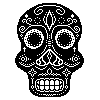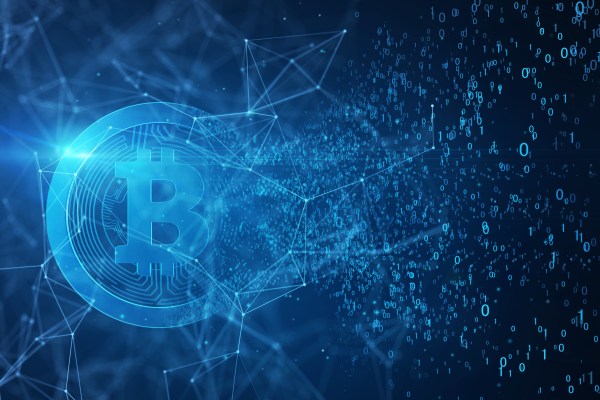Ordinals, a Bitcoin-based NFT-like project, has expanded significantly over the past two weeks, but its creator, Casey Rodarmor, said he had no idea it would explode.
“I thought I was building something good and I thought I was meeting an unmet market demand that NFT collectors had expressed a desire for,” Rodarmor told TechCrunch.
By the current market’s response, his creation did in fact meet that demand.
About 122,500 Ordinals have been inscribed, which is jargon for created (or minted), to date, according to Dune Analytics data. The number of total inscriptions is up 40% from about 88,000 on Tuesday. On February 8, the number of Ordinals inscribed peaked over 21,000, and Wednesday was the second highest day with over 17,7000, the data showed.
The Bitcoin community has been somewhat divided on whether NFTs on its blockchain are a good thing. While many see them as a positive, fun way to further grow its ecosystem, some “Bitcoin maximalists” oppose them for taking up block space on the network and making transaction fees more expensive, among other things.
“My theory on why this blew up is that [the community] saw this controversy, but then they saw exactly what they wanted — on-chain, immutable NFTs that are there forever. Like, fuck yeah, sign me up,” Rodarmor said.
Rodarmor’s Genesis inscription, which is the first Ordinal inscription — or inscription 0 — was some “tiny pixel art” of a skull that marked the beginning of it all, he said. The image was timestamped on December 14, according to the Ordinals website. It pays homage to the first block to be mined on the Bitcoin blockchain, which is commonly known as the Genesis Block. “It’s really simple, but I’m proud of it,” he added.

Image Credits: Ordinals inscription 0 (opens in a new window)
The second inscription, inscription 1, was made three days later. It an image of the infamous CryptoDickbutts NFT. No, that’s not a typo.
Rodarmor is a long-time Bitcoiner and programmer artist. He said he’s made art using code in the past, but it was always a hobby before he created Ordinals. In 2021, when NFTs started gaining interest, he saw the space as something he wanted to dive into, “even as a hardcore Bitcoiner who saw altcoins as uninteresting,” he joked.
In early 2022, Rodarmor decided he would figure out a way to create NFTs on top of Bitcoin’s chain. “So I came up with Ordinals, or Ordinal theory, when I’m being tongue-in-cheek.”
While the project isn’t the first to try to bring NFTs onto the Bitcoin blockchain, it’s definitely gaining the most traction today. Counterparty, for instance, was the first platform to inscribe NFTs on Bitcoin’s network with the Rare Pepe collection in 2014. Although Rare Pepe didn’t do much to boost mass demand, one of its NFTs from 2016 sold for $3.6 million at a Sotheby’s auction about a year ago.
Ordinals are a “simple concept” that essentially gives individual satoshis, the smallest denomination of bitcoin (equivalent to 100 millionth of a bitcoin), an identity and allows them to be tracked across transactions. The name derives from ordinal numbers, a common term in mathematics, he said.
And what’s the identity? These Bitcoin NFTs — or digital artifacts (as he prefers to call them) — live on-chain forever.
Rodarmor shared that he got the name inspiration for digital artifacts from ChatGPT when he couldn’t figure out what to call them. “I was sitting there asking ChatGPT what word would you call an NFT, digital collectible, that could also be a trading card or a 15th-century digital equivalent of a Chinese silk fan.”
ChatGPT replied with “digital artifact,” he said. “I was like, fuck yes, that’s it.”
While inscriptions are technically NFTs, Rodarmor prefers the term digital artifacts “because there’s a broader category of NFTs, but inscriptions are a subset of NFTs that don’t do certain things,” he said. “So it’s like all inscriptions are digital artifacts and also NFTs, but not all NFTs are digital artifacts.”
What makes inscriptions stand out from NFTs? Security, immutability, decentralization and homogeneity, among other subtle characteristics, Rodarmor said.
“Ordinal theory is like a lens that you can view the Bitcoin blockchain through, and when you view it through that lens, these trackable satoshis pop into view like Pokémon in the tall grass,” Rodarmor said. “That was what I needed, because I needed something where content could live as an artist.
“I wanted to make digital artifacts and then the inscriptions came as a way to add content to those trackable sets,” Rodarmor said. “Then that is what inscriptions became; that’s the story.”
But Rodarmor said the story isn’t fully formed.
“The short-term goal is to protect users and draw the line in the sand,” Rodarmor said. “I think that it’s very important to protect against scams.”
The project is currently fully open sourced, so in order for it to continue to scale, there need to be more developers, Rodarmor noted. “I have not taken any outside investment or made any promises, but I’m trying to scale an open source development organization to shepherd the technology and protocol.”
Down the line, there’s a chance that Ordinals could become a for-profit corporation, he said. “I need a corporation to serve as a legal liability shield for the website. So I don’t want anybody to be surprised if there’s going to be a corporation — and that corporation may grow in scope as appropriate.”
But for the foreseeable future, scaling Ordinals will be all about improving its technology, education and helping others learn about it. “That’s really going to drive the growth,” Rodarmor said.
Other community members have spoken out about the importance of infrastructure being built around the project, too. Many inscriptions are being completed manually rather than through a service like an NFT marketplace. Although some services have popped up in response to the sudden demand, the infrastructure is still extremely nascent and not bulletproof.
Accessibility is the “north star for all of this right now,” Nick Hansen, CEO and co-founder of Luxor, previously told TechCrunch. Over time, there will be more users and more products focused on expanding the Bitcoin NFT — or digital artifact — ecosystem.
“It has really escaped; it’s gone nuclear,” Rodarmor said. “There are people building things that I don’t even hear about until they’ve launched. So it’s really about where people want to take this.”
Rodarmor said he sees it as a “credibly neutral social layer” for the world. “You can put data on there, and it might not be to some people’s taste, but it’s pretty hard to censor it. People can use it as a sort of distributed publishing platform in addition to this with content you can own.”
While Rodarmor shared that he doesn’t know what’s in store for the long run, he believes that it will continue to grow as a “very powerful concept.”
“I think the sky’s the limit,” he added. “Come use bitcoin. The water is warm.”
